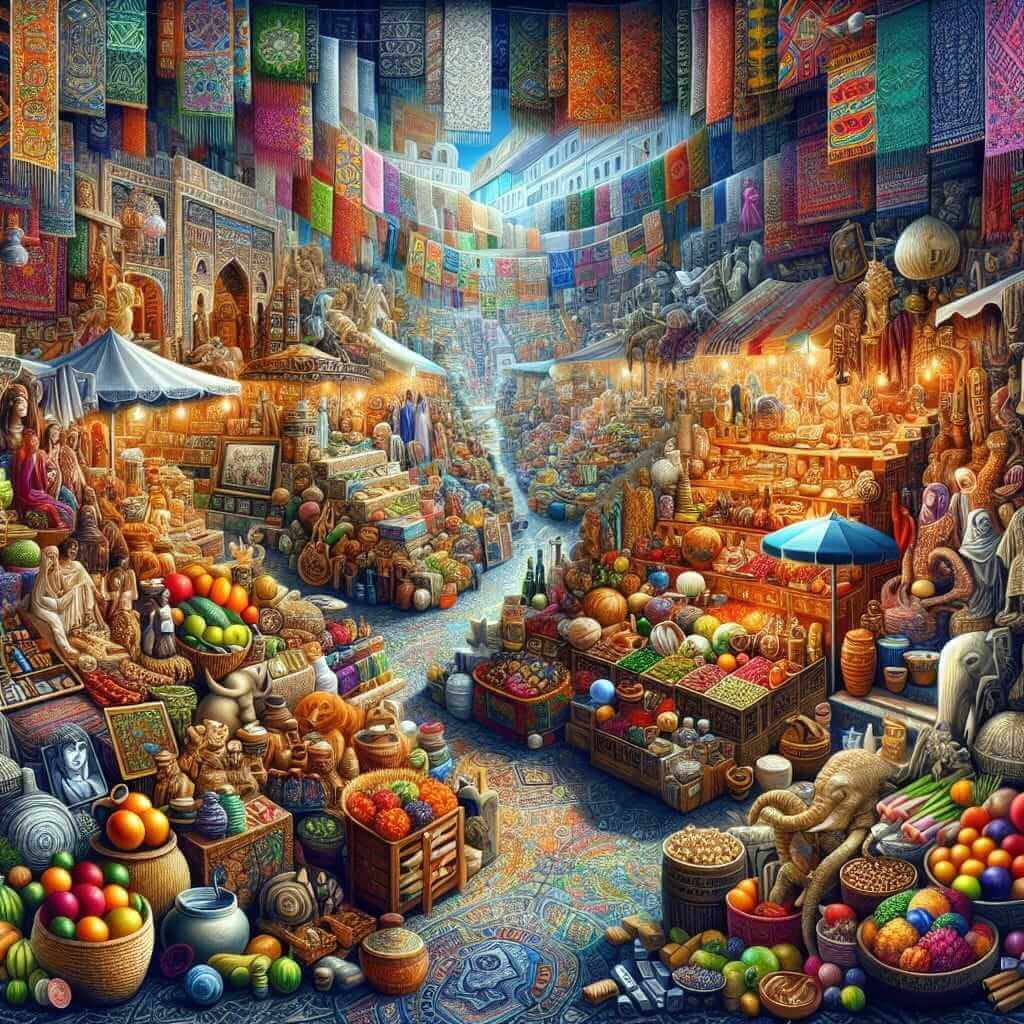In our increasingly interconnected world, global trade plays a pivotal role in shaping cultural exchange. As goods, services, and information flow across borders, so too do ideas, beliefs, and customs. This intricate relationship is a popular topic in the IELTS Writing Task 2, challenging test-takers to analyze the multifaceted influence of international commerce on cultural interactions. This article will delve into the nuances of this topic, providing you with the tools and knowledge to craft a stellar IELTS essay.
IELTS Writing Task 2 Sample Questions
Before we delve into writing a sample essay, let’s look at some potential IELTS Writing Task 2 questions related to the influence of global trade on cultural exchange:
- To what extent do you agree or disagree with the statement that global trade leads to cultural homogenization?
- Discuss the positive and negative impacts of global trade on cultural exchange, providing examples to support your arguments.
- Some people argue that the internet has surpassed global trade as the primary driver of cultural exchange. Do you agree or disagree?
Sample Essay Analysis
Let’s choose the first question to analyze and write a sample essay for:
To what extent do you agree or disagree with the statement that global trade leads to cultural homogenization?
This question requires you to present a clear stance on whether you believe global trade primarily leads to cultures becoming similar or if it allows for the preservation of unique cultural identities. You need to provide compelling arguments supported by relevant examples.
Sample Essay
Global trade, the backbone of our interconnected world, has undeniably accelerated the exchange of goods, services, and information. However, whether this translates into cultural homogenization is a complex question with no easy answers. While the influx of foreign products and ideas can lead to a certain degree of cultural blending, I firmly believe that global trade can also contribute to the preservation and celebration of cultural diversity.
On the one hand, proponents of the homogenization argument contend that global trade promotes a consumerist culture where standardized products and brands erode local traditions and preferences. The ubiquity of fast food chains like McDonald’s and fashion giants like Zara, for instance, are often cited as examples of how global brands can overshadow indigenous businesses and contribute to a more standardized cultural experience. Furthermore, the ease with which information is shared online can lead to the rapid spread of dominant cultures, potentially marginalizing smaller, less visible ones.
On the other hand, global trade can also be a powerful force for cultural preservation and diversification. When countries engage in trade, it fosters curiosity and appreciation for different cultures. For example, the increasing popularity of Japanese anime and K-pop music worldwide demonstrates how global trade can introduce consumers to new and diverse forms of cultural expression. Moreover, the internet, facilitated by global trade in technology, provides a platform for minority cultures to showcase their traditions and connect with a global audience. This can lead to greater understanding, respect, and even a resurgence of interest in endangered cultures.
In conclusion, while it’s true that global trade can lead to a certain degree of cultural blending, it is a far cry from complete homogenization. Instead, I believe that global trade, when approached thoughtfully, has the potential to be a powerful tool for promoting cultural understanding and celebrating our world’s rich tapestry of traditions, customs, and beliefs.
Word count: 285

Writing Tips
- Structure: Follow a clear essay structure (introduction, body paragraphs presenting both sides of the argument, conclusion) to enhance the coherence and organization of your writing.
- Vocabulary: Utilize a wide range of vocabulary related to trade, culture, and globalization. For instance, instead of repeatedly using “influence,” consider synonyms like “impact,” “effect,” or “consequence.”
- Grammar: Pay close attention to grammar accuracy, particularly subject-verb agreement, article usage, and tense consistency.
- Examples: Support your arguments with concrete examples drawn from history, current events, or personal experiences.
Vocabulary Builder
- Homogenization (noun) /həˌmɑːdʒənɪˈzeɪʃən/: the process of making things the same or uniform.
- Ubiquity (noun) /juːˈbɪkwɪti/: the state of being everywhere at once.
- Indigenous (adjective) /ɪnˈdɪdʒənəs/: originating or occurring naturally in a particular place; native.
- Marginalize (verb) /ˈmɑːrdʒɪnəˌlaɪz/: treat (a person, group, or concept) as insignificant or peripheral.
- Resurgence (noun) /rɪˈsɜːrdʒəns/: an increase or revival after a period of little activity, popularity, or occurrence.
Conclusion
The influence of global trade on cultural exchange is a nuanced and multifaceted topic, ripe for exploration in the IELTS Writing Task 2. By understanding the complexities of the issue, developing strong arguments, and expressing yourself with clarity and precision, you can confidently tackle any essay question on this subject. Remember to practice regularly, expand your vocabulary, and stay informed about current events related to globalization and cultural exchange to excel in your IELTS exam.